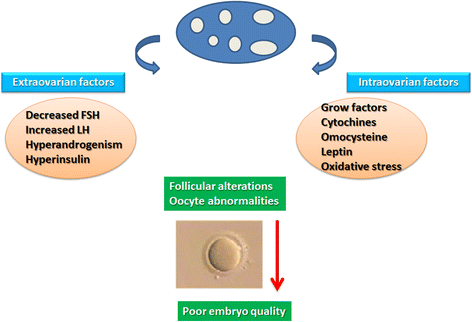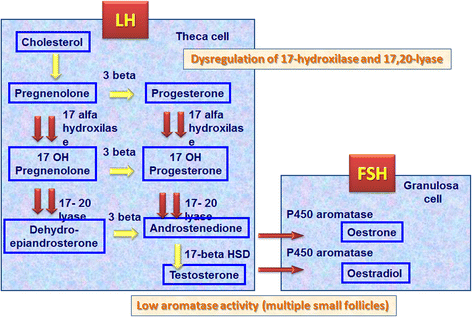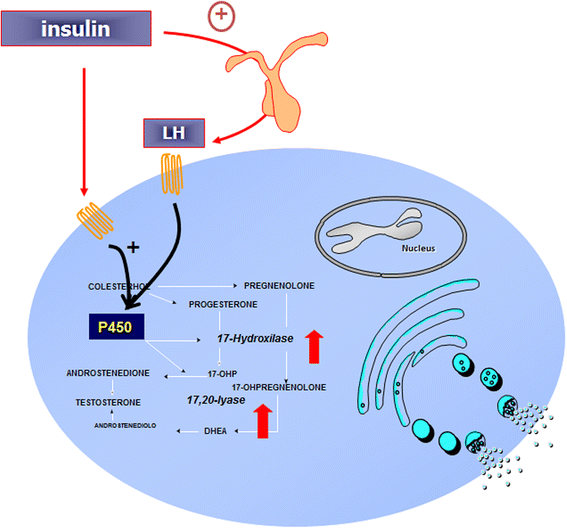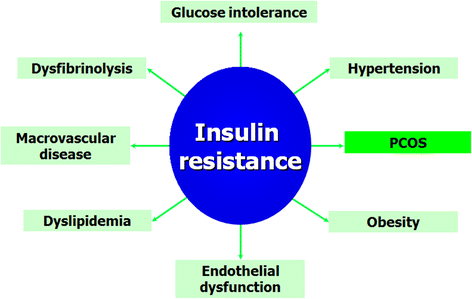Genetic, hormonal and metabolic aspects of PCOS: an update
- PMID: 27423183
- PMCID: PMC4947298
- DOI: 10.1186/s12958-016-0173-x
Genetic, hormonal and metabolic aspects of PCOS: an update
Abstract
Polycystic ovary syndrome (PCOS) is a complex endocrine disorder affecting 5-10 % of women of reproductive age. It generally manifests with oligo/anovulatory cycles, hirsutism and polycystic ovaries, together with a considerable prevalence of insulin resistance. Although the aetiology of the syndrome is not completely understood yet, PCOS is considered a multifactorial disorder with various genetic, endocrine and environmental abnormalities. Moreover, PCOS patients have a higher risk of metabolic and cardiovascular diseases and their related morbidity, if compared to the general population.
Keywords: Genetic; Hyperandrogenism; Infertility; Insulin-resistance; Metformin; Myo-inositol; Oral contraceptives; PCOS.
Figures







References
-
- Zawadski JK, Dunaif A. Diagnostic criteria for polycystic ovary syndrome: towards a rational approach. In: Dunaif A, Givens JR, Haseltine F, editors. Polycystic ovary syndrome. Boston: Blackwell Scientific; 1992. pp. 377–384.
Publication types
MeSH terms
Substances
LinkOut - more resources
Full Text Sources
Other Literature Sources
Medical

